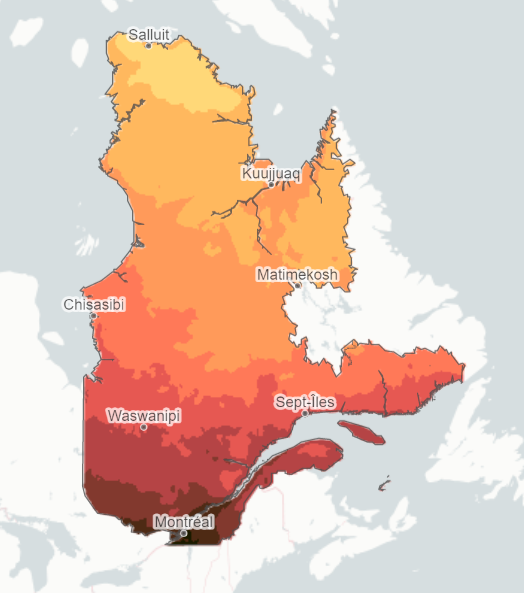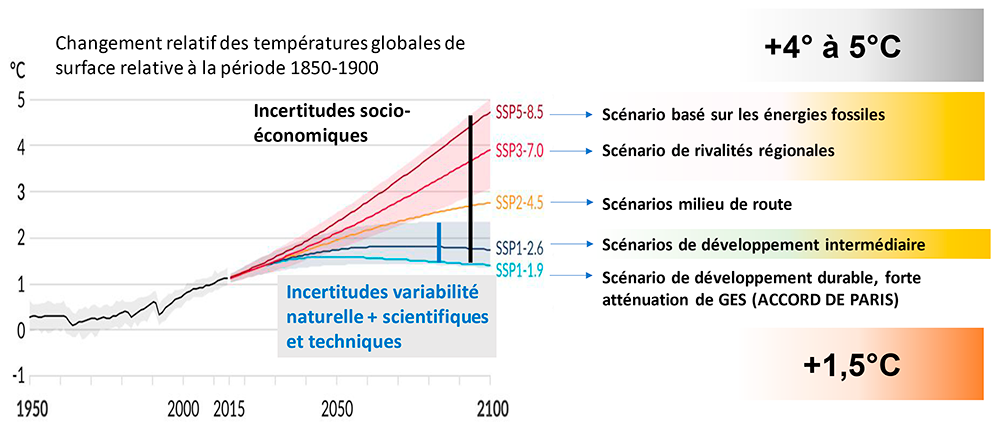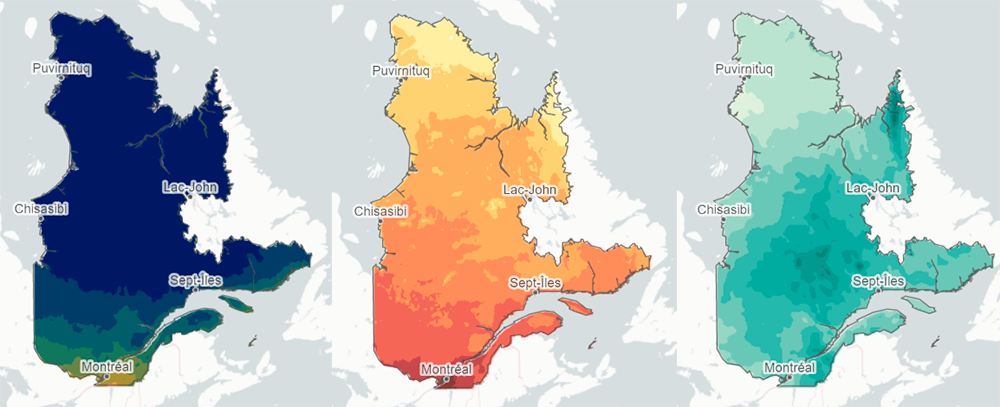New features | Climate Portraits
Climate Portaits has been updated. Discover all the new features!
New generation of climate models
Climate Portraits now uses projections from the 6th phase of the Coupled Model Intercomparison Project, CMIP6. This ensemble has served as the basis for the most recent IPCC reports. It is preferable to use this new generation when starting a new study.
Projections based on CMIP5 will remain available on Climate Portraits for some time to allow for the completion of ongoing studies. The results based on CMIP5 remain valid for the vast majority of variables.

Definition | CMIP6
The Sixth Coupled Model Intercomparison Project, published in 2020, is an international collaboration of climate modeling groups from around the world that facilitates the comparison, validation and sharing of climate model data.
Changes in greenhouse gas concentration scenarios
For CMIP6, four priority greenhouse gas concentration scenarios called SSPs (Shared Socio-economic Pathways) were selected. For this new version, Ouranos makes available the SSP3-7.0 and SSP2-4.5 scenarios. More scenarios, in particular SSP5-8.5, will be available in a future update. However, according to the recommendation of Working Group III of the most recent IPCC report, SSP5-8.5, based on fossil fuel-driven development, is qualified as very high emissions scenario and is currently considered to be unlikely.

New Reference Climate
Climate Portraits now relies on Environment and Climate Change Canada’s RDRS (Regional Deterministic Reforecast System) reanalysis for the adjustment of climate model outputs. It is a product of gridded (10 km) surface and precipitation meteorological variables that integrates atmospheric forecast data and various observations, allowing the production of detailed fields even for regions with scarce or no weather stations.
Did you know?
Covering all of North America, RDRS integrates additional data sets over Quebec and Canada. Thus, temperature, precipitation and wind speed data from the Réseau météorologique coopératif du Quebec, as well as adjusted precipitation data from Environment and Climate Change Canada archives are used as inputs for the reanalysis.
Improved post-processing methods
A univariate quantile-mapping post-processing method is used for the adjustment of climate model outputs. Three variants are implemented compared to previous versions, namely :
-
bias adjustment using diurnal temperature range;
-
calculation of the adjustment functions over moving windows of 30 days;
-
an adjustment of the frequency of dry days.
More intuitive color palette
Return users will undoubtedly notice the new color palette for maps and time series figures. These are both more intuitive, and directly inspired by IPCC recommendations.

Would you like more details on the data sources and methodology used on Portraits climatiques?